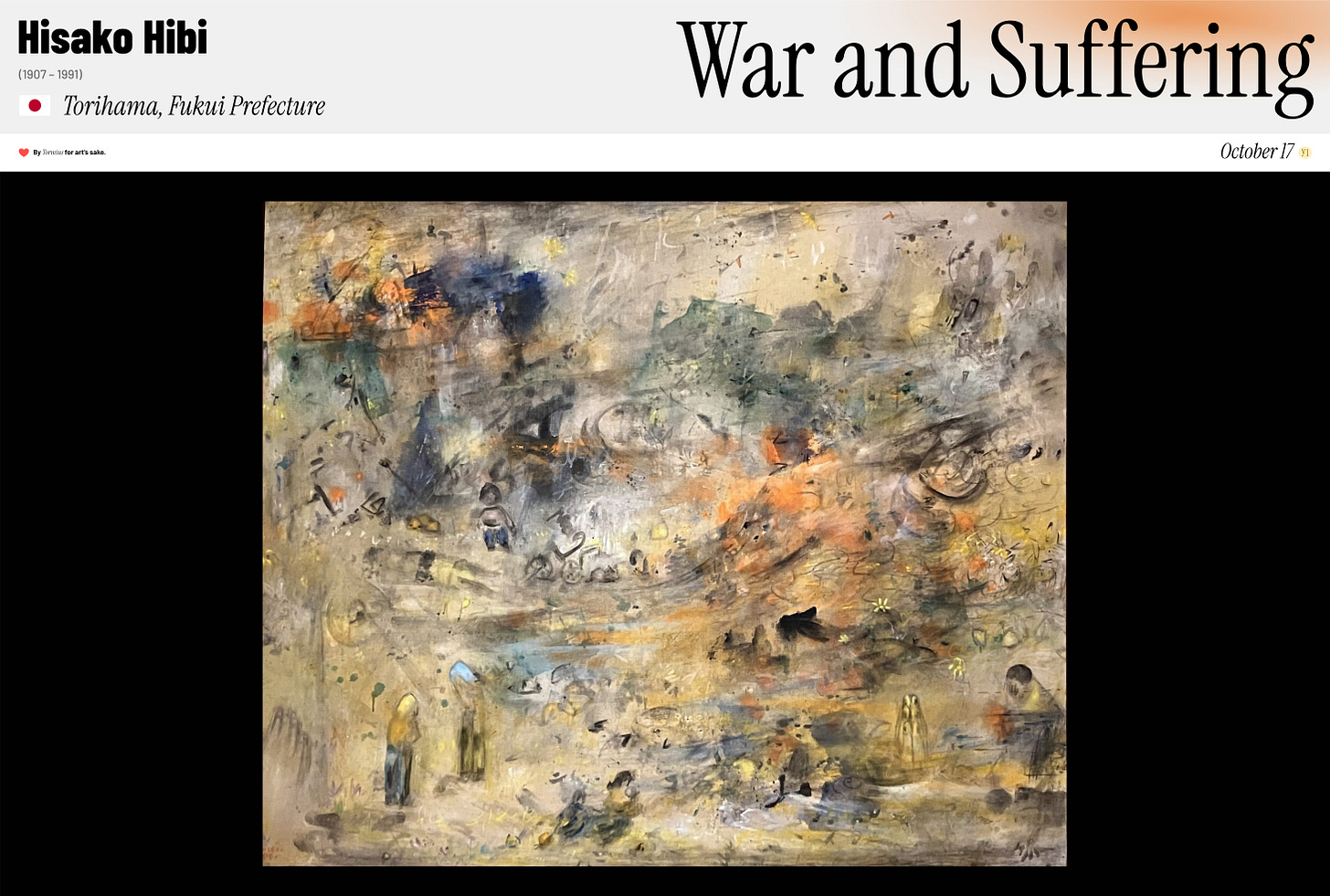Welcome to Tormius Nexus
In today’s D7ART section, we introduce…
What:
The painting is an abstract expressionist piece, filled with swirling colors and chaotic brushstrokes, representing the themes of war, destruction, and human suffering. The central part of the canvas is dominated by shades of gray, brown, and black, with bursts of orange and red that may symbolize fire or explosions. Scattered among the chaos are small, barely distinguishable human figures, blending into the overwhelming turmoil of their surroundings, evoking a sense of despair and confusion. The fragmented and layered composition suggests a world torn apart by conflict, with the figures standing as symbols of vulnerability.
Who:
Hisako Hibi, born in Torihama, Fukui Prefecture, Japan, was a Japanese-American artist who lived through the internment of Japanese Americans during World War II. She and her family were forced into the Tanforan Assembly Center and later the Topaz War Relocation Center, where she continued to paint despite the hardship. Hibi’s works often reflect themes of resilience, loss, and the emotional toll of war.
Where:
The abstract and non-specific setting in War and Suffering mirrors the universality of conflict and its devastating impact on humanity. Although the specific geographical location is not represented, the chaotic imagery evokes a sense of widespread destruction that could apply to any war-torn landscape. Hibi’s personal experiences of displacement during the war heavily influenced this work.
When:
While the exact date of this painting is unclear, the themes and style suggest it was created after World War II, possibly reflecting the aftermath of the war and Hibi’s personal journey through internment and displacement. The emotional depth and abstract nature of the piece suggest it was painted during a period when Hibi was processing the traumas of war and its effects on her community.
How:
This abstract composition is likely done with oil or watercolor on canvas, utilizing soft, expressive brushstrokes to convey the chaotic movement of war and its impact. Hibi’s use of muted and dark colors, contrasted with occasional fiery reds and oranges, emphasizes the destruction and devastation of the scene. The layering of paint and the lack of clear definition contribute to the abstract, emotionally charged nature of the piece.
Why:
Hibi’s work often explored themes of displacement, suffering, and endurance, particularly in relation to her experiences as a Japanese-American during World War II. War and Suffering encapsulates the emotional toll of war, both on an individual and collective level. It reflects her personal experiences of suffering during internment but also serves as a broader commentary on the inhumanity of war and its profound, far-reaching consequences. The figures, nearly lost in the chaotic background, emphasize the helplessness and insignificance of individuals in the face of large-scale conflict.
This text was created with the help of ChatGPT-4o. If any information is not entirely correct, I would appreciate a revision to help me learn, thank you.
Feel free to share your thoughts by sending a reply and we can chat about it!



